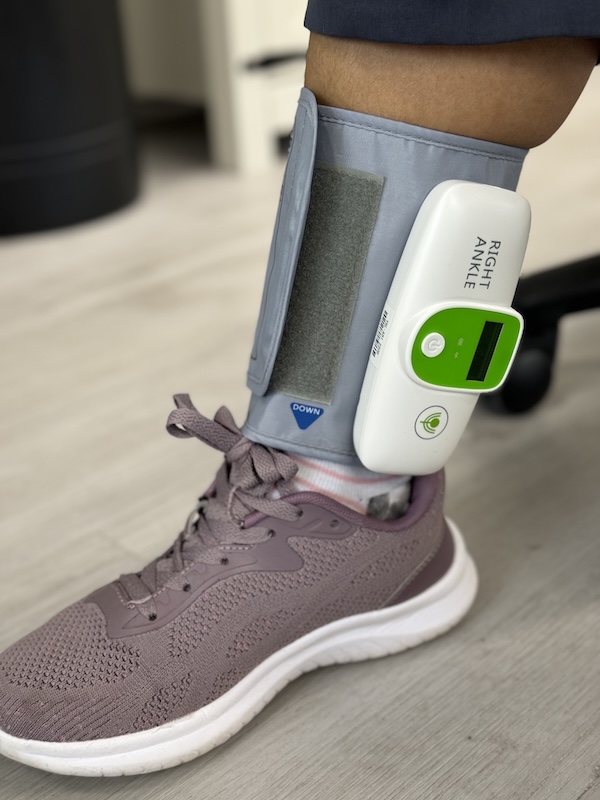At Restore First Health, clinicians take a holistic approach to advanced care for chronic wounds, accounting for an array of factors, such as a patient’s heart health, nutrition and lifestyle. To understand the whole picture of a patient’s care plan, clinicians examine different pieces of information, just like assembling a puzzle.
One of these valuable pieces is an Ankle Brachial Index (ABI) test, an advanced bedside tool our clinicians use to determine if a patient’s lower extremities have the appropriate blood flow to contribute to the wound healing process.
Why is an Ankle Brachial Index (ABI) test important for wound healing?
Following an injury, blood transports additional nutrients and white blood cells to the wound to aid in healing. However, if a patient’s circulation is restricted, the wound may receive insufficient blood flow, leading to delays in healing.
Key facts about an ABI test:
- It is a brief, non-invasive test that our clinicians perform at the bedside.
- The test compares blood pressure measurements between the patient’s arms and ankles.
- Significant differences in the measurements may indicate narrowed leg vessels due to peripheral vascular disease, which causes poor blood flow to a patient’s arms and legs.
Who should take an ABI test?
Our team of experienced wound care clinicians consults with each patient to develop a personalized care plan. For patients with leg wounds an ABI test may provide valuable insights for treatment planning. If clinicians are unable to administer the test bedside, an evaluation could be referred to a vascular clinic.
“Our teams provide a holistic approach to advanced wound therapies, applying the latest technologies and tools at the bedside to determine the best possible treatment path,” said Frank Curvin, MD, Medical Director, Restore First Health. “The ABI test is an important indicator for patients with leg wounds to help clinicians identify the risk status for healing due to insufficient blood flow.”
Using evidenced-based data empowers our clinicians and patients to make informed decisions to restore health by providing compassionate, coordinated care.
Supporting Resources:
McClary KN, Massey P. Ankle Brachial Index. [Updated 2023 Jan 16]. In: StatPearls [Internet]. Treasure Island (FL): StatPearls Publishing; 2024 Jan-. Available from: https://www.ncbi.nlm.nih.gov/books/NBK544226/
